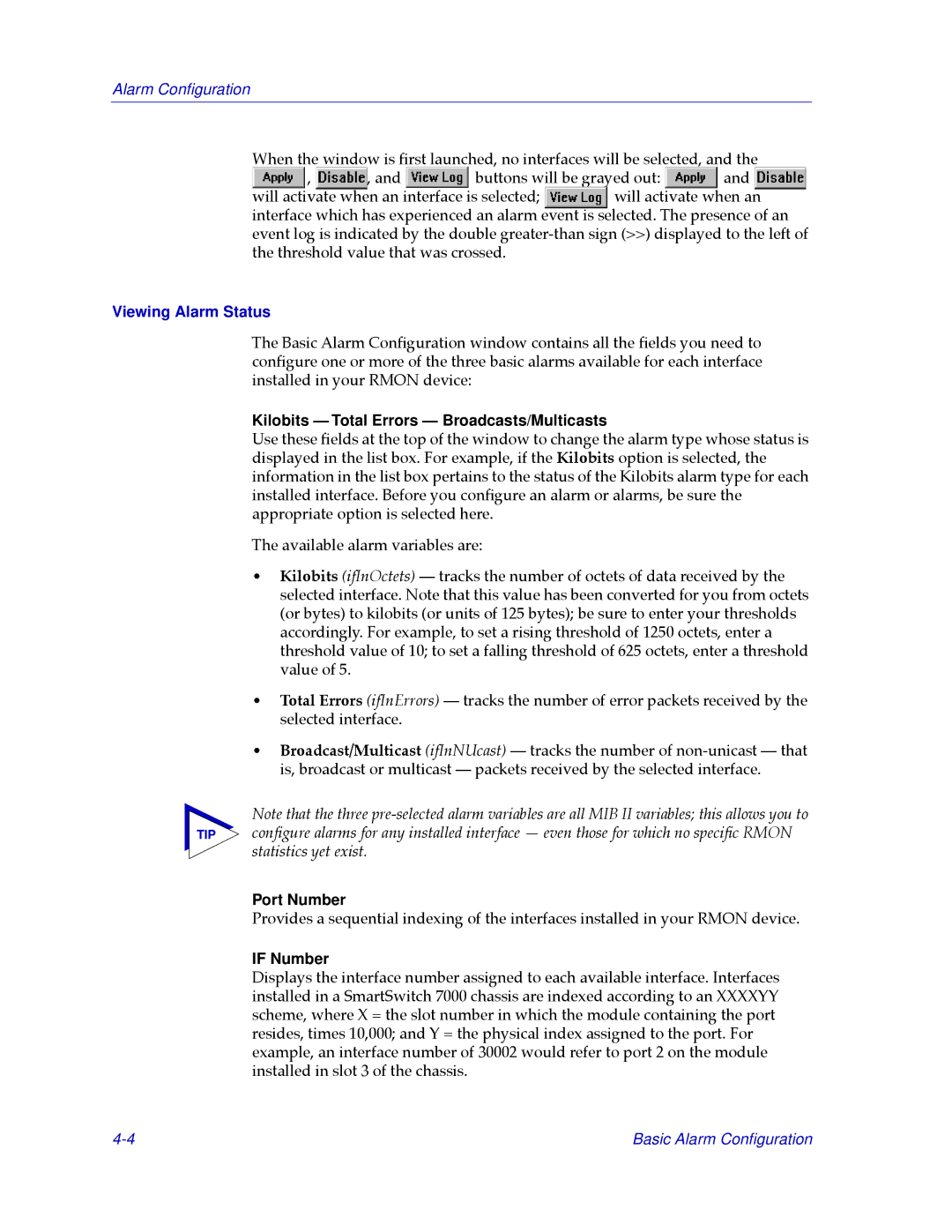
Alarm Configuration
When the window is Þrst launched, no interfaces will be selected, and the
![]() ,
, ![]() , and
, and ![]() buttons will be grayed out:
buttons will be grayed out: ![]() and
and ![]()
will activate when an interface is selected; will activate when an interface which has experienced an alarm event is selected. The presence of an event log is indicated by the double
Viewing Alarm Status
The Basic Alarm ConÞguration window contains all the Þelds you need to conÞgure one or more of the three basic alarms available for each interface installed in your RMON device:
Kilobits — Total Errors — Broadcasts/Multicasts
Use these Þelds at the top of the window to change the alarm type whose status is displayed in the list box. For example, if the Kilobits option is selected, the information in the list box pertains to the status of the Kilobits alarm type for each installed interface. Before you conÞgure an alarm or alarms, be sure the appropriate option is selected here.
The available alarm variables are:
¥Kilobits (ifInOctets) Ñ tracks the number of octets of data received by the selected interface. Note that this value has been converted for you from octets (or bytes) to kilobits (or units of 125 bytes); be sure to enter your thresholds accordingly. For example, to set a rising threshold of 1250 octets, enter a threshold value of 10; to set a falling threshold of 625 octets, enter a threshold value of 5.
¥Total Errors (ifInErrors) Ñ tracks the number of error packets received by the selected interface.
¥Broadcast/Multicast (ifInNUcast) Ñ tracks the number of
Note that the three
TIP conÞgure alarms for any installed interface Ñ even those for which no speciÞc RMON statistics yet exist.
Port Number
Provides a sequential indexing of the interfaces installed in your RMON device.
IF Number
Displays the interface number assigned to each available interface. Interfaces installed in a SmartSwitch 7000 chassis are indexed according to an XXXXYY scheme, where X = the slot number in which the module containing the port resides, times 10,000; and Y = the physical index assigned to the port. For example, an interface number of 30002 would refer to port 2 on the module installed in slot 3 of the chassis.
Basic Alarm Configuration |
